MSI Z270 Gaming M5 is priced, designed and developed for gamers but does it have enough juice to impress the Gamer in you!
Last week we took a look at the very interesting and very much armored motherboard from MSI, the MSI Z270 Gaming M7 which sits at the very top of the Gaming series lineup from MSI. We totally loved the M7 from MSI and today we are looking at its smaller cousin the MSI Z270 Gaming M5 which sits a notch lower in the lineup and is priced quite effectively at the $190 or Rs 19,000 mark in India!
Equipped with all the basic Z270 PCH features along with some MSI in house tweaks like the Mystic LEDs, M.2 Armor and Military Grade components the Z270 Gaming M5 is designed keeping in mind the necessities of a gamer. What it lacks is an extra M.2 port, front USB 3.1 Type-C header, an additional Realtek ALC1220 codec, OC features, power/reset buttons, enhanced memory compatibility and a more powerful CPU VRM with an additional supplementary power connection when we pit it against the Gaming M7 but that's a cost saving maneuver which is welcome from our side.
Packing and Accessories
MSI opted for a neat and tidy packing theme for the MSI Z270 Gaming M5 with a red backdrop and a chunky photograph of the motherboard occupying the entire right corner. This is basically the same packing theme as that of the MSI Gaming X Graphics Cards!
The back unlike the front is printed to the brim with features! A detailed marked diagram of the motherboard is printed in one corner highlighting all the physical features and on the right we see features such as the dual codec, Mystic LED, enhanced DDR4 memory compatibility.
Open the box and you'll find the motherboard in an anti-static bag resting on top of the bottom compartment that houses all the accessories.
On the accessories front the MSI Z270 Gaming M5 is on the humble end with just the basic and necessary accessories included to keep the price tag low. There’s is one 2-way SLI bridge connector, four SATA 6Gb/s cables, accessory installation pamphlet, warranty pamphlet, user manual, and installation DVD with software and drivers. Cable labeling stickers, LED lit I/O shield and two Mystic LED strip extension cable is also provided.
Closer Look and Features
MSI went low key with this one over here. Simply placing the motherboard out of the box shows the stark reality that the motherboard is indeed different from what the usual trend is going on in the motherboard market today. For a moment you can confuse the M5 with the M7 as they both look identical at a glance!
The Z270 Gaming M5 is one of the few motherboards out there that shout elegance from every corner! Its a full matte black product with highlights of grey and variations of off-white on the CPU VRM and PCH heatsinks. This is accentuated by armors, metal strips and underlying LEDs that can be used as per one's own whims.
Looking at the CPU area we can see the LGA 1151 socket resting in a remarkably clean area. This is the same socket that you can find on the Sky Lake compatible motherboards hence if you want to use a Kaby Lake CPU on your Z170/H170 motherboard then it might be a possibility after a BIOS upgrade.
DIMM slots on the reinforced by metal shields that not only work as an EMI shielding to the RAM sticks to ensure hindrance free performance but also imparts tensile strength to the slots in case one uses tall or heavy Memory kits like my Kingston HyperX Predator.
These support a maximum of 64GB DDR4 memory kit working at a maximum frequency of 3800Mhz. Also the mounting mechanism is changed and both the locking brackets need to be opened prior to DRAM installation.
Physical voltage read points and a debug LED display are provided at the north & south of the DIMM slots respectively to aid in voltage reading through a multi-meter. This is a welcome move as it doesn't restrict the Gaming M5 as a Gamer's exclusive board.
In the storage area there’s six SATA III 6Gb/sports and a U.2 port. The U.2 port shares its bandwidth with the bottom most full size PCIe 3.0x4 port so only one can be used at a time!
Turn your gaze towards the PCIe area and we see two PCIe 3.0x16 slots, one PCIe 3.0x4 and three PCIex1 slots for devices of a bygone era! Two M.2 slots are also provided that we'll discuss later on.
Two of the three full sized PCIe slots are armored to support large and heavy graphics card. If you are using a Kaby Lake or Sky Lake CPU then the configuration would be as follows for SLI configurations:
Single Card: 16x/0/0/
Dual SLI: 8x/8x/0/
Tri SLI: 8x/8x/4x/
Please note that you cna only use the bottom most PCIe 3.0 slot when the U.2 port is non-populated since they both share PCIe lanes.
A notable fact over here is that in ATX board like this you tend to find seven PCIe slots in total with four full length and three PCIex1 but in the MSI Z270 Gaming M5 there are only six eliminating the top most slot. By doing this MSI cleverly managed to shift the DIMM slots down by half an inch which in-turn cleared out some space in the CPU area and above it giving one the flexibility to choose from a range of beefy CPU air cooler without any compatibility issue.
The board comes with two M.2 slots out of which the top most can accommodate a SSD upto 110mm in length which is the longest SSD dimension possible today. Whereas the lower one has a capacity of 80mm. All are Intel Turbo Optane standard compliant which is Intel's new NAND solution presented as an intermediate between system memory & storage. These can work simultaneously as they share four PCIe Gen3 lanes from the Z270 PCH itself also meaning that you'll need a Kaby Lake CPU to make use of the Optane technology, a Sky Lake CPU would not work at all.
The M.2 shield on the second M.2 slot is MSI exclusive & helps to keep the SSD cool especially when you use a dual GPU configuration. Tests show that you can witness as much as 10°C difference in temperatures when using the shield. Its basically a metal shield with pre-applied thermal conductive pad under it.
For the I/O panel we have one PS/2 keyboard/mouse port, a clear CMOS button, one HDMI port, one DVI-D port, one USB Type C with 3.1 Gen 2 support and one USB 3.1 Type-A port (red) port. A couple of USB 3.0/2.0 ports along with one RJ-45 port & one optical S/PDIF Out connector is provided. Five OFC audio jacks for a 5.1 channel surround sound experience.
The two USB ports above the HDMI port are VR Boost enabled which we'll discuss later on.
Under the PCIe armor is hidden the Audio Boost 4 solution for the Gaming M5 which uses two ALC 1220 chips with 120dB sound to noise ratio. This arrangement is supported by Nichicon audio grade Fine Gold capacitors to deliver clear sound with high bass to power even the high end audio equipments.
Left and right audio channels are assigned to two different layers in the PCB along with an isolation strip to deliver ripple free sound quality.
The CPU is powered by an 11-phase Military Class-5 power delivery system controlled by a NIKOS PK616BA PWM controller and constituted of 10-years rated Titanium Choke and Black Caps. This is not an all digital power delivery system but a reliable one for sure.
Four ASMedia ASM1480 multiplexers are responsible for routing the PCIe lanes between the two silver x16 slots and are responsible for switching PCIe 3.0x4 lanes between the bottom PCIe 3.0x4 slot and the U.2 slot.
Some of the USB 3.0 and 3.1 USB ports on the board are controlled by the Asmedia ASM2142 chip to shed load from the CPU.
LAN functions are handled by the Killer's latest Gbit NICs, Killer E2500 solution and is quite competent in handling data traffic even while gaming which can be further customized by the provided software suite.
MSI has added a nifty little chip dubbed as the VR Boost chip that controls the two VR Boost USB ports on the I/O Panel. According to MSI this chip insures a strong and consistent signal to the connected VR headset through the designated ports ensuring a soothing VR experience free from signal jitters.
BIOS and Bundled Software
BIOS Overview
UEFI BIOS is getting more and more common with each manufacturer opting for it due to its simple and flexible interface along with the option to navigate via a mouse rather than a keyboard exclusive BIOS. MSI is no different and has offered not one but two versions of BIOS, EZ and Advanced versions, with the MSI Z270 Gaming M5 so as to suit every customer's needs.
On boot up by default you'll be greeted with a more comprehensive and detailed EZ BIOS screen. This is a crammed up screen that has the details about all the components installed on the board along with options laid out neatly under clear tabs on the left side. If you want to change fan speeds, maybe boot devices, or use its automated overclocking function or XMP, you can do so quickly and easily.
This is a much preferred version for the beginners and though it comes with a Game Boost Knob on the top left its useless since the Gaming M5 doesn't support this feature. I personally loved the "Memory Try It!" feature which comes with pre-sets to overclock your memory on the fly & are quite useful for everyone.
On pressing the F7 key you'll be teleported into the Advanced BIOS version or the traditional MSI UEFI BIOS version. This is a version that all the over clockers will love since the settings are broadly laid out with tab heading like Over Clocking Settings itself. A plethora of features are there out of which I'm showing you a selective few.
Bundled Software
This is the era when manufacturers provide customers with not just a motherboard and utility softwares that act more like blotwares if nothing else. Gigabyte App center is already what I've reviewed a lot of time & it has never failed to impress but MSI is no less rather a bit more refined in their approach.The heart of the software set is the MSI command set which gives you general features and information regarding the CPU, GPU, Fan Speed, IGP and the Game Boost knob...again!
Also one beautiful graphical window is there that provides you with temperature readings of each component & even tell you where they are located on the board.
The gaming app section is something that you'll be familiar to if you are a MSI graphic card owner. It give you all the information and tweaking options related to your GPU and you can select which vital stat you want to see on your screen. Also you can adjust mouse sensitivity and assign hot keys to your gaming mouse from here making it a one stop solution for gaming.
Another added feature is the Nahimic settings. Yes its the same Nahimic I talked about in the beginning. The Nahimic audio software boosts the audio performance by supplying a high definition sound technology which leads to clearer audio performance whether that be during music, video or gaming.
Some extra software include the SteelSeries Engine 3 for Steelseries gaming accessories, MSI version of CPUZ, XSplit Gamecaster with one year free subscription etc
Benchmarks and Overclocking
Putting all the components together and booting up into Windows was a breeze with the MSI Z270 Gaming M5. Everything worked properly and installed properly without any issue. The motherboard looks elegant and all black when off or when the LEDs are turned down ensuring no hindrance with the glow and appearance of the motherboard LEDs whatsoever.
For the benchmarks we used the following test setup configuration --
CPU: Intel Core i7 7700K 4.2Ghz
Motherboard: MSI Z270 Gaming M5
RAM: Kingston HyperX Predator 8GB DDR4 3000Mhz Memory Kit
Cooler: Corsair H100i GTX (Push Pull Configuration)
Graphics Card: MSI GTX 1060 Gaming X 6G
Primary Storage: Corsair Neutron GTX 480GB SSD
Secondary Storage: ADATA SX8000 256GB NVMe M.2 SSD
Power Supply: Corsair AX860i 860W 80+ Platinum
OS: Windows 8.1 Pro 64-bit
GPU Driver: ForceWare 375.70
The Intel i7 7700K comes with 4.2Ghz and 4.5Ghz boost. The system was stable on stock setting so we started our overclocking journey with this Kaby Lake offering and reached a stable 5.1Ghz with 1.43v however the memory was stuck at 2666Mhz CL14 and didn't reach anywhere above that no matter what we did even after using the latest BIOS 1.50 from the official website, hope MSI I would take note of this issue and try to fix it in their upcoming BIOS updates. Take note that the Kaby Lake chips tend to run hot and we did hit near 100°C at this frequency even with 15°C ambient temperature!
Considering I don't want to degrade the CPU and safely conduct the benchmarks so as to make them feasible for real world comparison I'll stick to 4.8Ghz at 1.34v and 2666Mhz CL14 on the memory.
AIDA64 Cache & Memory Benchmark
AIDA64 Extreme Edition is a great tool to bench your CPU and RAM in terms of their read-write-copy abilities.
AIDA64 GPGPU
The reason for including this benchmark was to simply observe the AES and Hash Test which is a determent of how easily your CPU or GPU can crunch complex calculations and higher score is always regarded better. Here the scores are near identical for both the boards.
7zip
7zip is a compression and decompression program that utilizes the processing power of the CPU alone. It is a synthetic benchmark that gives results very close to real life scores. The Gaming M7 shows to utilize the CPU and Memory power more effectively than the competing Gaming M5
Cinebench R15 & Cinebench R11.5
Cinebench uses Maxon's Cinema 4D engine to render a photo-realistic scene of some shiny balls and weird things (we miss the motorbike). The scene is highly complex, with reflections, ambient occlusion and procedural shaders so it gives a CPU a tough workout.
As Cinema 4D is a real-world application - used on films such as Spider-Man and Star Wars - Cinebench can be viewed as a real-world benchmark.
Not much of a difference can be spotted in the CPU performance over here both in single as well as multi core. On the GPU front a slight difference does emerge.
wPrime v2.10
wPrime is a leading multithreaded benchmark for x86 processors that tests your processor performance by calculating square roots with a recursive call of Newton’s method for estimating functions.
SuperPi Mod v1.5
SuperPi is a simple program that utilizes the processing power and memory speed of the system to calculate the value of Pi upto 1 Million or 32 Million decimal point depending upon what you choose. The time is calculated in minutes and seconds, we'll take them both in seconds, so lower the score faster is your computer. A similar scene as that of the wPrime benchmark is seen here aswell.
3D Mark Fire Strike
Fire Strike by 3D Mark is a test suit that plays a cinematic scene to determine the FPS, GPU temperature and CPU temperature scaling everything via a cumulative score. It is a great tool to benchmark your GPU since the render is GPU dependent.
Again the graphics performance of the Z270 Gaming M7 is better than that of the Z270 Gaming M5
Crysis 3
I can't start gaming benchmarks without running my all time favorites Crysis 3 but its a game that no system loves! The CryEngine 3 behind this scenic beauty can bring down any system to its knees and I mean any system. I set everything to Ultra at 1920x1080 resolution with MSAA 4X and motion blur high.
Rise of the Tomb Raider
The latest installation of Lara Croft in the spectacular Rise of the Tomb Raider 2016 with stunning graphics and rich location makes it a great game to benchmark with while enjoying in the due course! We used DX11 and settings were at Ultimate on full HD resolution.
Batman Arkham Knight
Since the game is powered by Epic's Unreal Engine 3 and supports DX11 tessellation so playing this game on 1920x1080 resolution with all settings maxed out can be any modern system's 'worst nightmare'!
DOOM
Finally we've introduced this much awaited titled to our benchmarks! Developed by ID Software Doom or popularly written as DOOM is a reboot of the older Doom series. Its fast and scary with more than enough variety of guns that you can ever imagine or even use!
Its OpenGL and quality is set to Ultra.
CrystalDiskMark 5.0.2
CrystalDiskMark is a disk benchmark software that analyses different types of hard drive. Giving sequential benchmark write and read statistics in MB/s. A simple program that is very useful.
The performance of the ADATA SX8000 on the Gaming M7 is slightly ahead of that on the Gaming M5 which indicates the superior storage performance by the MSI Z270 Gaming M7
My Verdict
The MSI Z270 Gaming M5 is one of the most balanced motherboards in the sub $200 price tag right now having the right amount of features and looks all bundled into a neat product that does full justice to its branding that is Gaming!The armor on the motherboard not only imparts an aggressive look to the motherboard but is also very well designed and executed unlike some other models from competing brands that are just off the hook and cluttered! Performance wise its ahead of the other competing products but does lose to its bigger and much more expensive cousin the Gaming M7 but notably not by a huge margin which earns the Gaming M5 some rightful brownie points.
MSI did a great job by keeping what's required and ditching what's not mainstream to cut costs, the aesthetics are same as that of the Gaming M7 but the bottom PCIe slot doesn't work if the U.2 port is populated since dual graphics card configuration is what is now supported by consumer grade cards!
I recommend the MSI Z270 Gaming M5 to every gamer out there who's willing to shell a bit extra for the armor and that Gaming branding if not then MSI's own MSI Z270 Gaming Pro Carbon is a worthy choice offering a near identical features at a bit lower price.
I give it a 7.5/10 earning our Silver Award!






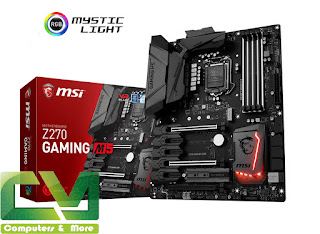

























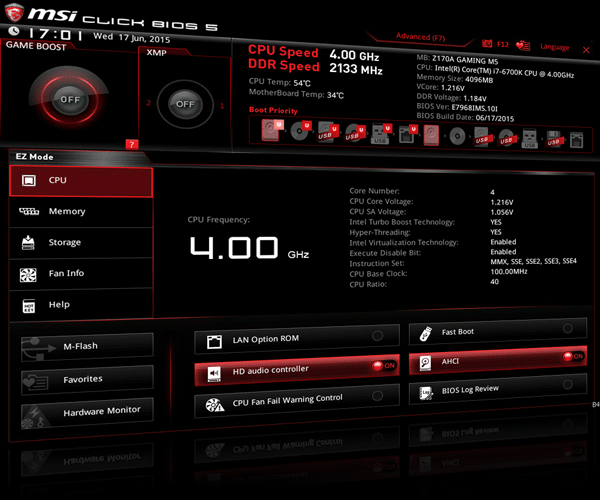












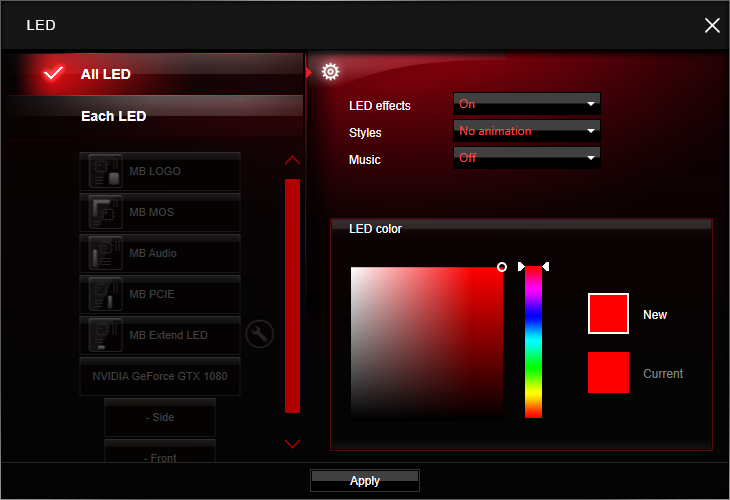






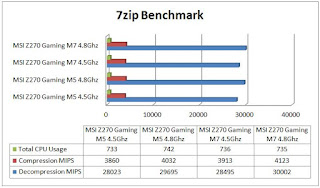
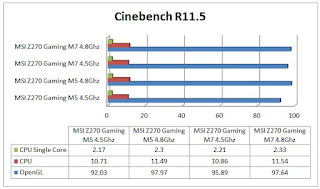






















0 comments:
Post a Comment